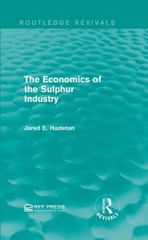Practice Problems - Chapter 1 Note that I have pulled these from the textbook. Since I realize that not all of you have the textbook yet, I have re-typed them here. If you do have the 11th edition, these are problems 1.4, 1.8, 1.10, and 1.12) "Try these problems on your own, but we will cover this at the beginning of the next lecture. 1. The RAND Corporation is a think tank located on 15 prime acres of seaside property in the center of Santa Monica, California. RAND purchased the land for its offices from the city in 1962 for $250,000, Given that the money RAND paid for its land in 1952 can be treated as a sunk cost, the cost of the land to HAND is zero and HAND would thus be foolish to consider purchasing a new site in Las Vegas and relocating there. A. Given that RAND did purchase the land in 1952 for $250.000, is the rest of the statement True, False, or Uncertain? Explain all of the ways in which the statement is true/false/uncertain. 2. A university produces two commodities: research and teaching. The resources the university uses include faculty and staff, libraries, classrooms, and so on. The following table indicates some points on the university's PPF: A. Does research production by the university exhibit increasing, constant, or decreasing per-unit opportunity costs? B. Graph the university's PPF (assuming that the straight-line segments connect the points specified above]. Indicate which areas of the graph correspond to unattainable production points, production points that make the most effective use of the university's resources, and points where there are unemployed resources. C. Suppose that the university is at point B but would like to alter production to point C. What would be the per-teaching-unit opportunity cost of producing the extra teaching units? D. Suppose that the university is at point C but would like to alter production to point B. What would be the per-research-unit opportunity cost of production the extra research? E. What will happen to the university's PPF if the main laboratory burns down? (Assume that the laboratory is not used to produce teaching but is used solely to produce research.) Graph the new PPF. F. What will happen to the PPF if all of the campus resources are cut in half? Graph the new PPF. G. Suppose the university is at point F. The university president proposes to move the school to point B. The president claims that B is a more desirable choice since the total output is 750 + 20 = 770 total units of output B versus 150 + 150 = 300 output units at F. Is the president correct? 3. "Abraham Lincoln was paid $25,000 as president. Today, the president earns $400,000 a year. Does this mean that President Lincoln was relatively underpaid for his service? (Hint: The textbook indicates that the CPI in 1863 was 9. The only source I could find pegged the CPI in 1863 at 12.60 and CP) in 2021 at 273.003). Solve this problem both ways and see if the answer changes.) 4. According to a recent study, the average American living in an urban area spends 41 hours per year sitting in traffic (clearly lower than an anticipated estimate for Los Angeles). The estimated cost of the gridlock is $78 billion in burned gasoline (explicit costs) and wasted time (implicit costs). How should the estimated opportunity costs with the growing traffic gridlock be adjusted if the study has not accounted for the fact that motorists can make cellular phone calls while traveling on freeways (presumably hands free calls)7 Explain







